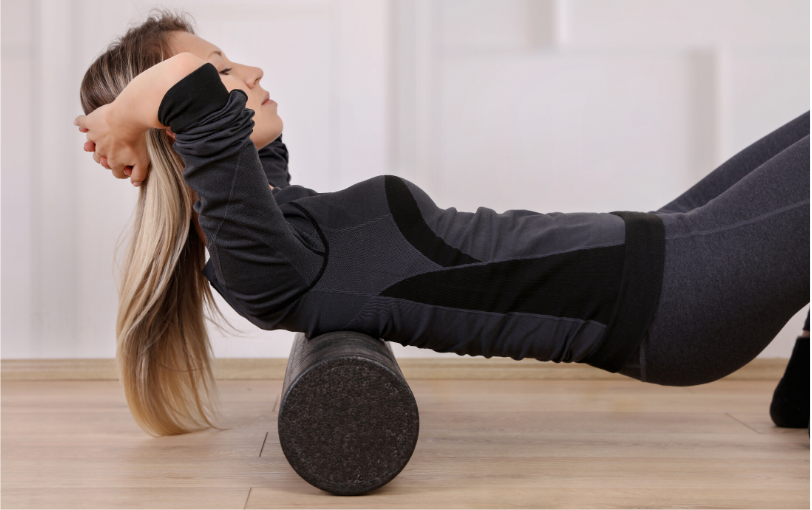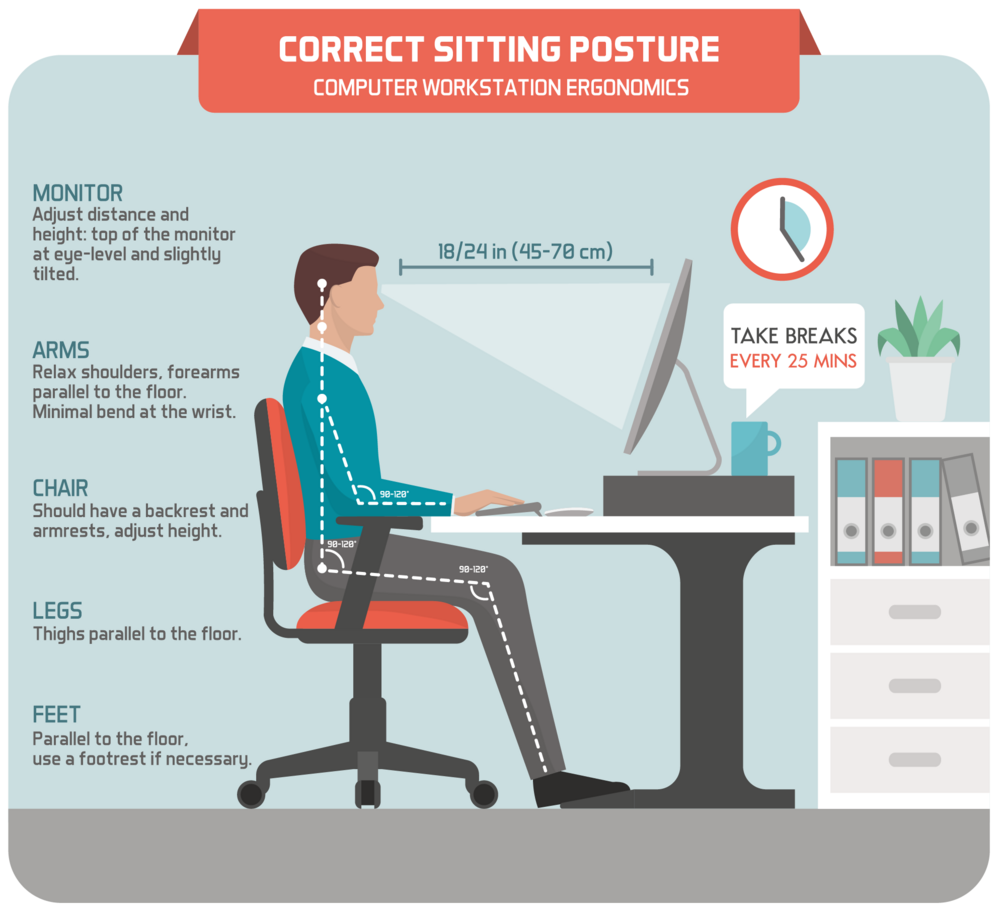Sitting is the new smoking, so is desk work the devil?
We all have 24-hours in a day and if you have a job 8 or more hours of that day are probably spent at work. That’s a third of your day, so of course what you do in that time is going to have a lasting effect on your body.

If you’re lucky enough to have a physical job there are some great health benefits to being active all day. For the rest of us, the work day often means sitting at a desk. There are a lot of theories on how sitting at a desk for long periods of time effects the body. As much as we love a good theory, here’s what we know:
- Your next position is your best position. No posture is truly “bad” unless it is held for a long period of time. This is because the longer a posture is held, the larger the load going through those trunk muscles. If those muscles do not have the endurance to hold that posture, they can get excessively fatigued, and rely on other structures, like your joints and ligaments, which can lead undue pain.
- Some muscle get tight when you sit. When you are sitting at a desk, your hips and knees are bent, this can lead to a tightening of your hip flexors and hamstrings. Using a computer or writing at a desk can result in rounded shoulders and tight chest muscles.
- Some muscles get weak when you sit. When you are sitting, your glutes are not active. If you continue to sit without breaks, this can be up to 8hrs without glute activation. Over time, this can lead to weakening of the glute muscles.
- Some muscles get overly fatigued. Contrary to popular belief, sitting is not a completely inactive task. Your trunk muscles require endurance to keep you sitting upright. Your upper traps require the endurance to hold your arms in place to type on the keyboard and use the mouse. If these muscles are not strong enough to deal with with the load over 8hrs of a day, that is when you may start to experience muscle aches.

Now you know the facts, what can you do about it?
- Get moving. You’ve heard it before, but breaking up your time spent sitting is really important. Put things in place to ensure this happens: regular drink breaks, walking meetings, chatting to someone in the office rather than sending an email or even an active lunch break. This will also increase productivity, as it decreases feelings of fatigue and improves focus.
- Make sure your desk is set up ergonomically. This includes having your feet touch the ground, your elbows at right angles and the top third of your screen at eye level. There are various things you can change about your desk set up that can put you in a position where your trunk muscles are strongest, this will lead to less fatigue over the course of the day.
- Mobilise! If sitting for extended periods really is unavoidable, try to get a stretch in everyday or every other day. There are many ways you can mobilise, from trigger point, foam rolling, static and dynamic stretching.Focus particularly on those areas that get tight with sitting: hip flexors, hamstrings, chest or read more about mobility.
- Strengthening your trunk. If you strengthen your core and back muscles, you are better able to hold postures for longer without undue fatigue. Excessive fatigue can be the reason you experience an aching back, neck and shoulders after a long week at work. The guidelines for strengthening are 2-3 times per week with 2-4 sets of 8-12 reps of each major muscle group. Focus on compound movements, moving through a full range of motion, but start at your own level and get help from a professional if you’re new to strength training.

Keeping a poster or print out of a diagram like this one can also help to remind you to address your set up, posture and how often you move. If you try these strategies and don’t get relief or if you find your aches and niggles are getting worse, it’s important to consult a health professional.
